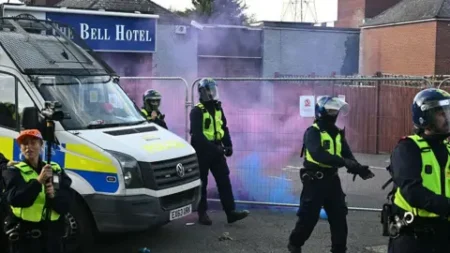In a groundbreaking ruling, the Supreme Court upheld a federal law on Friday that prohibits people who are the subject of domestic violence restraining orders from owning weapons. The decision, with an 8-1 majority that included both conservatives and liberals, was a significant victory for gun safety advocates and victims of domestic violence. The ruling marks a departure from a standard set by the conservative majority in 2022, requiring gun laws to have a historical connection to survive constitutional scrutiny.
The case at hand involved Zackey Rahimi, a Texas man convicted of violating the 1994 law that prohibits individuals under domestic violence restraining orders from possessing guns. Chief Justice John Roberts, writing for the majority, stated that the law does not need to mirror historic regulations exactly, as long as it aligns with the tradition of historic laws targeting individuals who pose a threat of physical violence to others.
While the decision was 8-1, five conservative justices issued concurring opinions, indicating ongoing debate within the court regarding the historical analysis of gun laws. Justices Gorsuch and Kavanaugh, both appointed by former President Trump, emphasized the importance of historical precedent in evaluating modern gun regulations.
Justice Amy Coney Barrett expressed concern about lower courts requiring near-identical historical laws to justify modern gun restrictions, cautioning against overly specific analogues. Justice Clarence Thomas, who authored the 2022 opinion setting the historical standard, defended the decision and asserted that Rahimi’s case fell within that framework.
The ruling left open unresolved questions about disarmament laws for non-violent criminals, prompting speculation about future challenges. Cases involving federal prohibitions on gun ownership for unlawful drug users and non-violent felons are pending before the court, including one linked to Hunter Biden’s felony gun possession case.
The Supreme Court is also considering cases challenging state-level gun regulations, such as Illinois’ ban on “assault weapons” and New York’s concealed carry regulations. The justices may soon decide whether to hear oral arguments in these cases, potentially shaping the future landscape of gun control laws in the United States.











